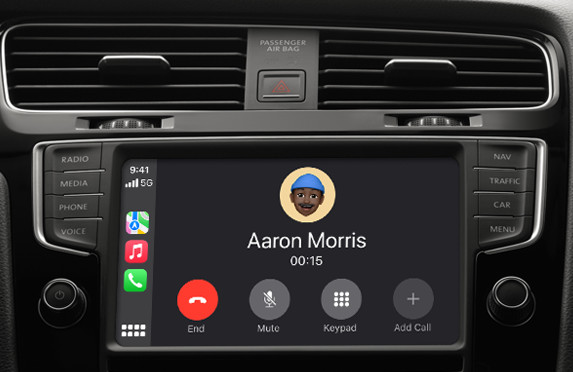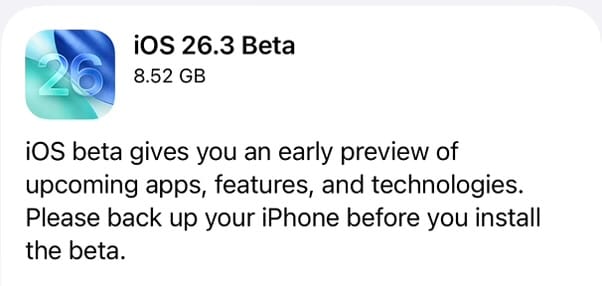Two and a half years after dropping a bombshell announcement that it would eliminate Apple CarPlay and Android Auto from its electric vehicles, General Motors is doubling down on one of the most unpopular decisions in recent automotive history. In a recent interview that can only be described as tone-deaf, GM executives not only defended their controversial choice but invoked the name of Steve Jobs himself to justify removing a feature that customers overwhelmingly love.
The Steve Jobs Defense
In an October 2025 interview on The Verge's Decoder podcast, GM Chief Product Officer Sterling Anderson made a comparison that would make even the most devoted Apple fans cringe. Removing CarPlay, Anderson claimed, is "a very Jobsian approach to things."
His reasoning? Just like when Apple removed the optical drive from MacBooks, GM is making a bold choice that customers will eventually thank them for. "The removal of the disk drive, nobody liked that, everybody on the forums and Facebook was complaining about it," Anderson explained. "But to that he said, 'Look, guys, flash storage really is the future. Get on board, you'll see that.' That's kind of what we're saying here."
There's just one glaring problem with this analogy: Steve Jobs removed optical drives because SSDs were objectively faster, more reliable, and more efficient. GM is removing CarPlay to replace it with... a Google-based system that customers consistently rate as inferior to the software they already use on their phones every day.
A Confusing Metaphor Gets Even More Confusing
Anderson didn't stop there. He went on to compare using CarPlay in your car to using iPhone Mirroring on a MacBook, asking how many people actually use phone projection on their laptop instead of native applications. The implication being that just as laptop users prefer native apps over phone mirroring, drivers should prefer GM's built-in infotainment over CarPlay.
The comparison falls apart under even minimal scrutiny. People don't use iPhone Mirroring on their MacBooks because MacBooks already have fully-featured versions of the apps they need. GM's infotainment system, by contrast, offers a limited selection of apps through a restricted Google Play Store implementation, with many popular services simply unavailable. Users aren't being offered something better; they're being offered something objectively worse and told they should be grateful.
The Expansion Continues
Perhaps the most significant revelation from the interview is that GM is now officially expanding its CarPlay ban beyond electric vehicles. CEO Mary Barra confirmed that as the company moves toward "major rollouts," customers should expect new gas-powered vehicles to also lack smartphone projection capabilities.
This marks a notable escalation. GM initially framed the decision as specific to EVs, arguing that tighter integration between navigation, charging infrastructure, and their Super Cruise autonomous driving system required a unified approach. That justification, however thin it was, has now been abandoned. The truth is becoming increasingly clear: this was never about technical necessity.
The Real Reasons Behind the Ban
While GM executives spin narratives about "deeply integrated experiences" and revolutionary user interfaces, the actual motivations are far more prosaic, and they revolve around two key factors: data and money.
Data Collection
When drivers use CarPlay or Android Auto, the data about their navigation destinations, music preferences, charging habits, and app usage flows to Apple and Google, not to GM. This leaves automakers in the dark about how customers actually use their vehicles. As analyst Andrew Hart explained, this "starves car companies, and they lose intelligence that could help them improve their offerings."
GM wants unfettered access to this data to understand driver behavior, optimize vehicle features, and theoretically create better products. The company has been less transparent about another use for this data: selling it to third parties. Reports have surfaced about GM sharing driver data with companies like LexisNexis, raising serious privacy concerns that the company has been reluctant to address directly.
Subscription Revenue
Follow the money. In interviews with Reuters, GM Chief Digital Officer Edward Kummer openly admitted that "we do believe there are subscription revenue opportunities for us." CEO Mary Barra has set an ambitious target of generating between $20 billion and $25 billion in annual revenue from subscriptions by 2030.
With CarPlay, users already have free access to their preferred navigation apps, music services, and communication tools. By forcing customers onto GM's platform, the company can position itself as a gatekeeper, potentially charging for features that were previously free or included as part of users' existing subscriptions. While GM currently offers eight years of free access to Google Maps and Assistant with EV purchases, the long-term monetization strategy is transparent.
The Customer Satisfaction Problem
The disconnect between GM's confidence and customer sentiment couldn't be more stark. According to Apple's own data, CarPlay is available in 98% of new cars sold, and 79% of new car buyers say they would only consider purchasing a vehicle that's CarPlay compatible. Consumer Reports found that 57% of users are "very satisfied" with CarPlay, compared to just 50% satisfaction with automaker-built systems.
Even GM's own customer research tells a damning story. Reports emerged in 2024 that GM was sending questionnaires to prospective buyers asking specific questions about CarPlay and Android Auto. According to Reddit users who received these surveys, many respondents delivered a clear message: "no mirroring, no buying."
Dealers are nervous too. They understand that removing a feature customers explicitly want makes their jobs harder. As one dealer perspective suggested, if GM truly believes its Google-based system is superior, why not offer both and let customers choose? The fact that GM refuses this approach suggests the company knows exactly which option customers would prefer.
The Safety Excuse Falls Flat
When the backlash first erupted, GM attempted to reframe the decision as a safety issue. Tim Babbitt, GM's head of product for infotainment, claimed that CarPlay and Android Auto have "stability issues that manifest themselves as bad connections, poor rendering, slow responses, and dropped connections," which supposedly force drivers to pick up their phones and create distraction hazards.
This argument is problematic on multiple levels. First, millions of drivers use CarPlay and Android Auto daily without the catastrophic safety issues GM describes. Second, forcing drivers to use an unfamiliar, less capable system doesn't reduce distraction; it increases it as users struggle with interfaces they don't understand. Third, and most tellingly, GM's own implementations have been plagued by software bugs, slow performance, and glitches that far exceed the occasional CarPlay connectivity hiccup.
The Aftermarket Fights Back (and Loses)
The depth of customer frustration spawned an interesting development: White Automotive and Media Services (WAMS) developed an aftermarket kit that could restore CarPlay and Android Auto functionality to GM's EVs. The system provided OEM-quality integration, giving customers back the features GM had taken away.
GM's response was swift and heavy-handed. In March 2025, the company ordered the dealership installing the WAMS kit to stop, and the product was subsequently discontinued. WAMS cited "a variety of factors" making the product "no longer viable in the long term," but the message was clear: GM would not tolerate workarounds to its policy, even ones that customers were willing to pay for.
This episode underscores a troubling reality of modern vehicle ownership. As cars become increasingly software-defined, manufacturers hold unprecedented control over functionality. Features that customers consider essential can be removed at will, and attempts to restore them can be shut down. The era of aftermarket radios and simple upgrades is over; we're now at the mercy of corporate software strategies.
The Competitive Landscape
GM's stance becomes even more puzzling when viewed against its competitors' decisions. Ford CEO Jim Farley articulated the common-sense approach that GM refuses to embrace: "70% of our Ford customers in the US are Apple customers. Why would I go to an Apple customer and say, 'Good luck'? That doesn't seem very customer-centric."
Tesla and Rivian have successfully built vehicles without CarPlay, but they entered the market as tech-forward startups that never offered the feature to begin with. GM, by contrast, provided CarPlay for years before taking it away, creating a sense of loss rather than establishing expectations from day one. Honda's Prologue and Acura ZDX, both built on GM's Ultium platform, offer CarPlay and Android Auto alongside similar features like Super Cruise (rebadged for Honda), proving that GM's technical justifications don't hold water.
Even Volvo and Polestar, often cited as examples of automakers with excellent proprietary systems, haven't abandoned CarPlay. They offer both, trusting customers to use whichever interface suits their needs.
A Hint of Olive Branch
In what might be the only silver lining from the recent interview, CEO Mary Barra revealed that GM is working with Apple to add support for car keys in Apple Wallet. This feature will allow iPhone users to lock, unlock, and start their GM vehicles using their phones. When asked about Apple Music integration, however, GM declined to comment, saying only that they don't "have anything to share on that right now."
These crumbs of functionality highlight just how absurd the situation has become. GM will let you unlock your car with your iPhone, but not use the apps, navigation, and interface you prefer while driving it.
The Emperor Has No Clothes
What makes GM's crusade against CarPlay so frustrating is the sheer arrogance underlying every defense. The company acts as if it's making a brave, visionary decision that customers will eventually understand and appreciate. In reality, it's making a user-hostile choice driven by data collection ambitions and subscription revenue dreams, then wrapping it in the language of innovation and customer benefit.
The Steve Jobs comparison is particularly galling because Jobs was famous for removing features to make products better, not to serve corporate interests at the expense of user experience. He removed the floppy drive when USB and networked storage were superior alternatives. He removed the headphone jack when wireless audio technology had matured. GM is removing CarPlay when the alternative is demonstrably worse by every customer satisfaction metric.
The Likely Outcome
Industry analysts and customers alike predict that GM will eventually reverse course, but not before damaging its reputation and sales figures. The company has already faced significant criticism, conducted customer surveys that reveal deep dissatisfaction, and watched competitors succeed with the very approach GM rejected.
The question isn't whether GM will bring back CarPlay but how long it will take for reality to override corporate stubbornness. In the meantime, car buyers have spoken clearly: they'll simply buy vehicles from manufacturers that respect their preferences.
For a company that claims to be customer-centric and forward-thinking, GM's CarPlay debacle reveals something much different: a corporation that thinks it knows better than its customers, even when every piece of evidence suggests otherwise. That's not innovation. That's hubris.
As vehicles become increasingly defined by software rather than hardware, the GM CarPlay saga serves as a cautionary tale about the balance of power between manufacturers and consumers. When companies prioritize data collection and subscription revenue over user experience, everyone loses—except perhaps the executives chasing quarterly targets and long-term monetization strategies.












Discussion